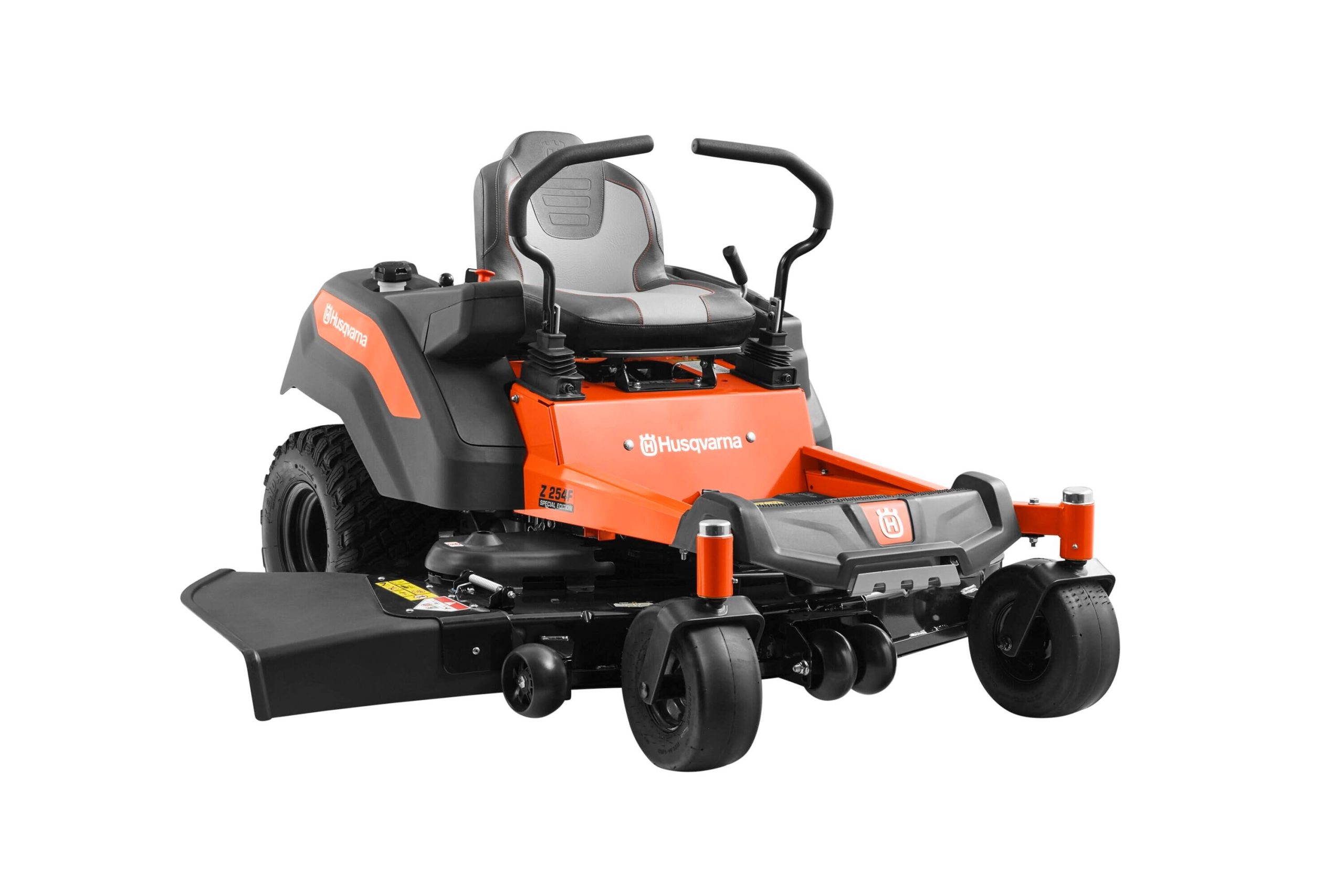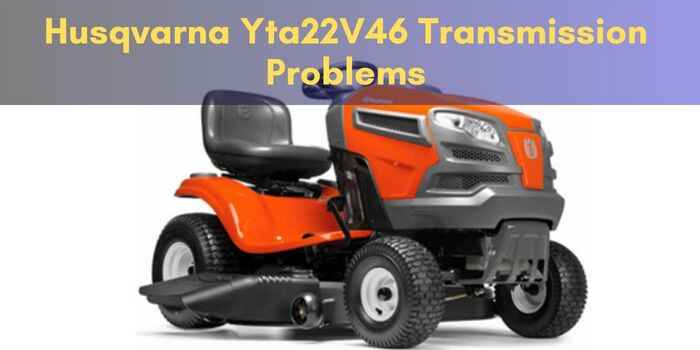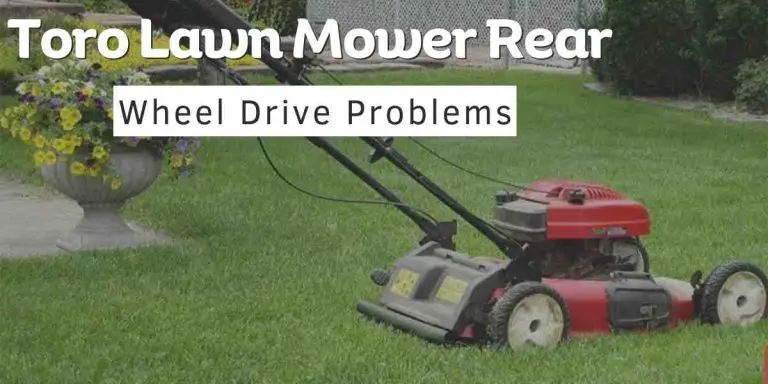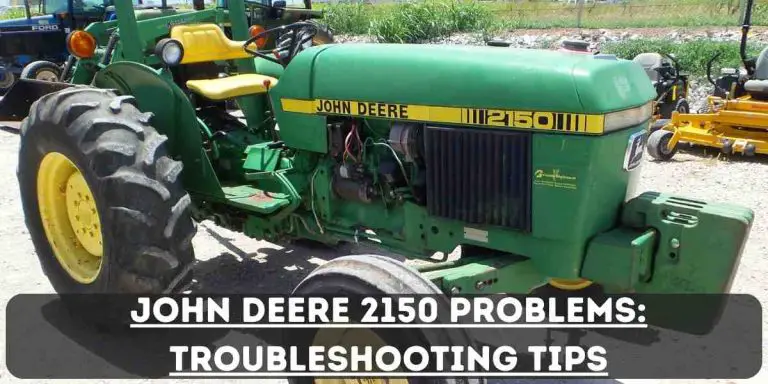Husqvarna Zero Turn Mower Problems: Top 5 Issues Uncovered
Husqvarna zero turn mower problems can include issues with the engine, cutting blades, belt, or electrical components. Husqvarna is a reputable brand known for its high-quality zero-turn mowers, but like any mechanical equipment, problems can arise.
From engine malfunctions to belt or blade issues, understanding potential problems and their solutions can help you keep your Husqvarna zero-turn mower in optimal working condition. This article will highlight some common issues that owners may encounter and provide tips on how to troubleshoot and resolve these problems.
By addressing these problems promptly, you can ensure your mower continues to deliver excellent performance while maintaining a pristine lawn.
1. Engine Issues
In this section, we will discuss some common engine problems that you may encounter with your Husqvarna zero turn mower. Engine issues can significantly impact the performance and functionality of your mower, so it’s important to address them promptly. Below, we will explore three common engine problems, their possible causes, and troubleshooting tips to resolve them.
Engine Overheating
One of the most common engine problems you may face is overheating. Engine overheating can occur due to various reasons and can lead to decreased performance and potential damage if not addressed promptly.
Causes of engine overheating
There are several factors that can contribute to engine overheating. Some common causes include:
| Causes of Engine Overheating |
|---|
| Insufficient coolant levels |
| Damaged or faulty radiator |
| Malfunctioning thermostat |
| Clogged or restricted airflow |
Prevention and troubleshooting
To prevent engine overheating, it’s crucial to regularly check and maintain your mower’s cooling system. Here are some useful troubleshooting tips to resolve engine overheating problems:
- Check the coolant levels and ensure they are adequate.
- Inspect the radiator for any damage or leaks.
- Replace a faulty thermostat if necessary.
- Clean or replace the air filter to improve airflow.
- Make sure the cooling fins and engine components are clean and free from debris.
Difficulty in Starting the Engine
If you’re facing difficulty starting the engine of your Husqvarna zero turn mower, it can be frustrating and hinder your mowing tasks. Several factors can contribute to this problem, and it’s important to identify the root cause.
Possible reasons for difficulty in starting
There are various reasons why you may experience difficulty starting the engine of your mower. Some common causes include:
- Old or fouled spark plugs
- Empty or contaminated fuel tank
- Blocked fuel lines
- Malfunctioning ignition switch
Troubleshooting tips to resolve the issue
If you’re facing difficulty starting the engine, you can try the following troubleshooting tips:
- Replace spark plugs regularly to ensure proper ignition.
- Check and refill the fuel tank with clean, uncontaminated fuel.
- Clean or replace any blocked fuel lines.
- Inspect and repair or replace the ignition switch if needed.
Engine Stalling
Engine stalling can be another frustrating issue that you may encounter with your Husqvarna zero turn mower. It can disrupt your mowing process and indicate larger underlying problems.
Common causes of engine stalling
Engine stalling can occur due to various factors. Some common causes include:
- Clogged or dirty carburetor
- Fuel delivery issues
- Malfunctioning safety switches
- Ignition problems
How to diagnose and fix engine stalling problems
If your mower’s engine is stalling, you can follow these steps to diagnose and fix the issue:
- Clean or replace the carburetor to ensure proper fuel mix and flow.
- Check the fuel delivery system for any blockages or leaks.
- Test and repair or replace any malfunctioning safety switches.
- Inspect the ignition system, including spark plugs and wiring, and troubleshoot as necessary.
By addressing these common engine issues and performing regular maintenance on your Husqvarna zero turn mower, you can ensure optimal performance and longevity while minimizing downtime and potential repair costs.
2. Electrical Problems
Electrical problems can be a source of frustration for Husqvarna zero turn mower owners. Issues with the battery, wiring, or electrical components can cause the mower to malfunction or fail altogether. In this section, we will explore the common electrical problems faced by Husqvarna zero turn mower owners and provide troubleshooting steps to get your mower back up and running.
Battery Issues
A faulty battery is a common electrical problem that can prevent your Husqvarna zero turn mower from starting or running smoothly. It is important to recognize the symptoms of a faulty battery so that you can take appropriate action.
Symptoms of a faulty battery:
- Difficulty starting the mower
- Intermittent power loss while mowing
- Slow or sluggish engine response
- Dimming or flickering lights
If you are experiencing any of these symptoms, it may be time to troubleshoot and replace the battery.
Steps to troubleshoot and replace the battery:
- Start by inspecting the battery connections for any signs of corrosion or damage. Clean the terminals if necessary.
- Check the battery voltage using a multimeter. A fully charged battery should have a voltage of around 12.6 volts.
- If the voltage is low, attempt to recharge the battery using a battery charger. If the battery fails to hold a charge, it is likely faulty and needs to be replaced.
- When replacing the battery, ensure that you select a compatible replacement with the same voltage and capacity as the original battery.
- Install the new battery, making sure to connect the positive and negative terminals correctly.
- Test the mower to ensure that the new battery has resolved the electrical issues.
Wiring Problems
Wiring problems can also lead to electrical issues in your Husqvarna zero turn mower. It is essential to be able to identify the signs of wiring problems and know how to address them.
Signs of wiring problems:
- Intermittent loss of power
- Mower not starting
- Flickering lights
- Erratic operation of electrical components
If you notice any of these signs, it is recommended to inspect the wiring for any visible damage or loose connections.
Methods to identify and repair wiring issues:
When identifying wiring issues, follow these steps:
- Visually inspect the wiring harness for any signs of damage, such as frayed or exposed wires.
- Tug gently on the wires to check for loose connections.
- If any damage or loose connections are found, repair or replace the affected wiring.
- Test the mower to ensure that the wiring repairs have resolved the electrical problems.
Troubles with Electrical Components
In addition to battery and wiring problems, electrical component failures can also cause issues with your Husqvarna zero turn mower. Here are some common electrical components that may fail:
- Ignition switch
- Starter motor
- Solenoid
- Fuse
- Alternator
If you suspect a faulty electrical component, there are steps you can take to troubleshoot and determine the cause of the problem.
Troubleshooting steps for faulty electrical components:
- Start by visually inspecting the component for any visible damage or signs of malfunction.
- Using a multimeter, test the component to check for proper functioning. Consult the mower’s manual for specific testing procedures.
- If the component fails the test, it is likely faulty and should be replaced.
- Install the new component according to the manufacturer’s instructions.
- Test the mower to ensure that the replacement has resolved the electrical issues.
3. Transmission And Drive System Malfunctions
When it comes to Husqvarna zero turn mowers, the transmission and drive system are vital components that ensure smooth operation and efficient performance. However, like any complex machinery, these systems can sometimes encounter problems that can affect the mower’s power, speed, and overall functionality. In this section, we will address three common transmission and drive system malfunctions: loss of power or speed, belt slippage, and wheel and drive system alignment issues. Let’s take a closer look at each problem and explore the steps to diagnose and fix them.
Loss of Power or Speed
Potential causes of loss of power or speed can vary, but diagnosing the issue correctly is crucial in order to resolve it effectively. Here are a few possible causes you should consider:
- Worn-out or damaged transmission belts
- Clogged or dirty air filters
- Lack of proper lubrication in the drive system
- Malfunctioning engine components
To diagnose and fix the issue, follow these steps:
- Inspect the transmission belts for any signs of wear or damage. Replace them with new ones if necessary.
- Clean or replace the air filters to ensure proper airflow to the engine.
- Check the lubrication levels and add lubricant if needed.
- If the problem persists, consult a professional to examine and fix any potential engine issues.
Belt Slippage
If you notice signs of belt slippage in the transmission system, it’s important to address the issue promptly to avoid further damage. Here are some indicators to watch out for:
- Unusual noise coming from the transmission area
- Inconsistent or jerky movement of the mower
- Excessive vibration while operating the machine
To adjust or replace the belts and resolve the problem, follow these steps:
- Refer to the user manual for specific instructions on belt adjustment or replacement.
- Loosen the belt tension and adjust it to the recommended specifications.
- If the belts are excessively worn or damaged, replace them with new ones.
Wheel and Drive System Alignment Problems
Wheel and drive system alignment problems can lead to uneven cutting, poor maneuverability, and unnecessary strain on the mower’s components. Here are some symptoms that indicate alignment issues:
- Uneven or scalped grass after mowing
- Difficulty steering or turning the mower
- Inefficient power distribution to the wheels
To realign the wheels and drive system, follow these steps:
- Refer to the user manual to locate the adjustment points for the wheel and drive system alignment.
- Inspect and adjust the alignment according to the manufacturer’s guidelines.
- Ensure that each wheel’s toe-in and toe-out settings are within the recommended tolerances.
4. Cutting And Mulching Issues
When it comes to maintaining a well-manicured lawn, a Husqvarna zero turn mower can be a game-changer. However, even the best machines can encounter certain issues that may affect the cutting and mulching capabilities. In this section, we will address three common problems that users may experience: uneven cutting, poor mulching performance, and blades not engaging or disengaging properly.
Uneven Cutting
One of the frustrating problems that can arise when using a Husqvarna zero turn mower is uneven cutting. Instead of achieving a perfectly leveled lawn, you may notice uneven patches or sections that are slightly higher or lower than the rest. This not only affects the overall aesthetics of your lawn but also hampers the health and growth of the grass.
Causes of uneven cutting
To address this issue, it is essential to understand the possible causes behind uneven cutting. Here are some factors that may contribute to the problem:
- Uneven tire pressure: Inconsistent tire pressure can affect the mower’s ability to evenly cut the grass.
- Dull or damaged blades: Blunt or damaged blades may struggle to slice through the grass uniformly.
- Incorrect cutting height: Setting the cutting height too low or too high can result in an uneven cut.
- Terrain irregularities: Hills, bumps, or uneven ground can make it difficult for the mower to cut the grass evenly.
Ways to ensure a uniform and even cut
To achieve a uniform and even cut with your Husqvarna zero turn mower, consider the following tips:
- Regularly check and adjust tire pressure to ensure consistency across all wheels.
- Sharpen or replace blades when they become dull or damaged.
- Set the cutting height according to the recommended specifications for your specific lawn conditions.
- Smooth out any uneven terrain or fill in low spots before mowing.
Poor Mulching Performance
In addition to providing a clean and even cut, a zero turn mower should also deliver efficient mulching capabilities. However, if you find that the mulching performance is subpar, there are certain factors to consider.
Factors affecting mulching performance
The effectiveness of mulching can be influenced by various factors, including:
- Dull or damaged blades: Blades that are not sharp or in good condition may struggle to finely chop the grass clippings, resulting in poor mulching.
- Excessive grass buildup: If too much grass clippings accumulate beneath the deck, it can impede the mulching process and hinder proper airflow.
- Wet or damp grass: Mulching damp grass clippings can lead to clumping and uneven distribution.
- Operating speed: Mowing at high speeds can affect the mulching performance, as the grass may not get ample time to be adequately processed.
Tips for improving mulching results
To enhance the mulching performance of your Husqvarna zero turn mower, keep in mind the following suggestions:
- Regularly inspect and sharpen blades to ensure optimal cutting efficiency.
- Avoid letting grass clippings accumulate beneath the deck by either using a bagging attachment or periodically removing excess buildup.
- Mow the lawn when it is dry, as this allows for better mulching results.
- Maintain a moderate mowing speed to give the mower enough time to mulch the grass effectively.
Blades Not Engaging or Disengaging Properly
Another common issue faced by Husqvarna zero turn mower users is problems with blade engagement. This problem may manifest in blades not starting or stopping when desired, affecting the mower’s overall cutting functionality.
Possible reasons for blades malfunctioning
Blade engagement issues can occur due to several reasons, such as:
- Loose or damaged blade belt: A loose or damaged blade belt can prevent the blades from engaging properly.
- Defective blade engagement switch: A faulty or malfunctioning switch may hinder the activation or deactivation of the blades.
- Electrical wiring problems: Damaged or loose wires can disrupt the electrical signals required for blade engagement.
- Mechanical obstruction: Debris or grass clippings buildup beneath the deck or around the blade spindle can impede the proper engagement of the blades.
Troubleshooting techniques for blade engagement issues
If you are experiencing difficulties with your Husqvarna zero turn mower’s blade engagement, consider the following troubleshooting techniques:
- Check the blade belt tension and adjust or replace it if necessary.
- Inspect the blade engagement switch for any signs of damage or malfunctioning. If needed, replace the switch.
- Thoroughly examine the electrical wiring for any visible issues and repair or replace as required.
- Clean out any debris or grass clippings from beneath the deck and around the blade spindle to eliminate mechanical obstructions.
By understanding and addressing the various cutting and mulching issues that can arise with a Husqvarna zero turn mower, you can ensure that your equipment performs at its best, resulting in a beautifully manicured lawn and a hassle-free mowing experience.
5. Steering And Control Problems
Husqvarna zero turn mowers are known for their maneuverability and precise control. However, just like any piece of machinery, they can encounter steering and control problems over time. In this section, we will explore common issues that may arise with the steering and control of your Husqvarna zero turn mower, and provide troubleshooting steps to address them effectively.
Steering Difficulty
Steering difficulty is a common problem that Husqvarna zero turn mower owners may encounter. If you find it hard to maneuver your mower or experience resistance when turning, there are a few potential reasons to consider.
Reasons for steering difficulties:
- Low tire pressure: Insufficient tire pressure can make steering more challenging. Check the tire pressure and adjust it to the recommended level.
- Worn-out wheel bearings: Over time, wheel bearings may wear out, causing steering issues. Inspect the wheel bearings and replace them if necessary.
- Improper belt tension: A loose or worn-out drive belt can lead to difficulties in steering. Check the belt tension and adjust or replace it accordingly.
By addressing these common causes, you can often restore smooth and effortless steering to your Husqvarna zero-turn mower.
Steps to troubleshoot and fix steering issues:
- Check the tire pressure and inflate or deflate the tires as needed.
- Inspect the wheel bearings for any signs of damage or wear, and replace them if necessary.
- Inspect the drive belt for tightness and wear. Adjust or replace the belt if needed.
- Lubricate the steering components using a suitable lubricant to ensure smooth operation.
- If the problem persists, consider seeking professional assistance from a certified Husqvarna technician.
Control Lever Malfunction
A control lever malfunction can greatly hinder your ability to operate your Husqvarna zero turn mower effectively. Here are the signs to watch out for that may indicate problems with the control lever.
Signs of control lever problems:
- Unresponsive control lever: If the lever fails to respond or moves sluggishly, there may be an issue with the control mechanism.
- Inconsistent speed adjustment: If you struggle to maintain a consistent speed despite adjusting the control lever, it could indicate a malfunction.
- Excessive vibration or shaking: Any unusual vibrations or shaking of the control lever may signify underlying problems.
If you notice any of these signs, it is important to address the control lever issues promptly to ensure optimal performance.
How to address issues with the control lever:
- Inspect the control lever for any visible damage, such as bent or broken parts.
- Clean the control lever and remove any debris that may impede its movement.
- Check the connection points between the control lever and the mower’s control system, ensuring they are secure.
- If the control lever shows signs of wear or damage, consider replacing the lever or the affected components.
- If the problem persists, consult a qualified technician for further diagnosis and repair.
Braking System Failure
A failing braking system on your Husqvarna zero turn mower can pose significant safety risks and hinder your control over the machine. Here are the signs that may point to issues with the braking system.
Signs of a failing braking system:
- Loss of braking power: If you notice a significant decrease in braking effectiveness or the mower fails to stop as expected, it could indicate a problem with the braking system.
- Spongy or unresponsive brake pedal: If the brake pedal feels spongy or does not provide the expected feedback, it may signal a malfunction.
- Unusual noises or grinding sounds: Any strange noises, such as grinding or squeaking, during braking are potential signs of braking system problems.
Addressing brake-related problems promptly is crucial to maintain a safe operating condition of your Husqvarna zero turn mower.
Troubleshooting steps for brake-related problems:
- Inspect the brake pads for wear or damage and replace them if necessary.
- Check the brake cables for fraying or misalignment and adjust or replace them as needed.
- Ensure the brake system is properly lubricated to facilitate smooth operation.
- If the braking system continues to malfunction, consult a qualified technician for professional diagnosis and repair.
By following these troubleshooting steps, you can address steering and control problems effectively, ensuring optimal performance and safety while operating your Husqvarna zero turn mower.
Frequently Asked Questions On Husqvarna Zero Turn Mower Problems
What Are The Most Common Problems With Zero Turn Mowers?
The most common problems with zero turn mowers are engine issues, belt problems, steering difficulties, and uneven cutting. The engine may not start or run smoothly, belts can wear out or break, steering may be stiff or unresponsive, and the mower may leave uneven patches of grass.
How Do You Check The Hydraulic Fluid On A Husqvarna Zero Turn Mower?
To check the hydraulic fluid on your Husqvarna zero turn mower, look for the hydraulic fluid reservoir. Remove the cap and check the fluid level. It should be between the minimum and maximum marks on the dipstick. Add fluid if needed, ensuring it matches the manufacturer’s recommendations.
What Is The Problem With The Husqvarna Ride On Mowers?
The problem with Husqvarna ride-on mowers revolves around reliability and durability issues. Customers have reported difficulties with the transmission, engine, and overall build quality, leading to frequent breakdowns and costly repairs.
What Is The Life Expectancy Of A Husqvarna Lawn Mower?
The life expectancy of a Husqvarna lawn mower varies depending on maintenance and usage. With proper care and regular maintenance, a Husqvarna lawn mower can last for many years, providing reliable performance for your lawn care needs.
Conclusion
To sum up, the Husqvarna Zero Turn Mower certainly has its fair share of problems that owners should be aware of. From potential engine issues to steering and deck complications, understanding these common challenges can help users troubleshoot and maintain their mowers effectively.
Remember to perform regular maintenance, address problems promptly, and consult professional help if needed. By doing so, you can maximize the performance and lifespan of your Husqvarna Zero Turn Mower, ensuring a hassle-free mowing experience.





